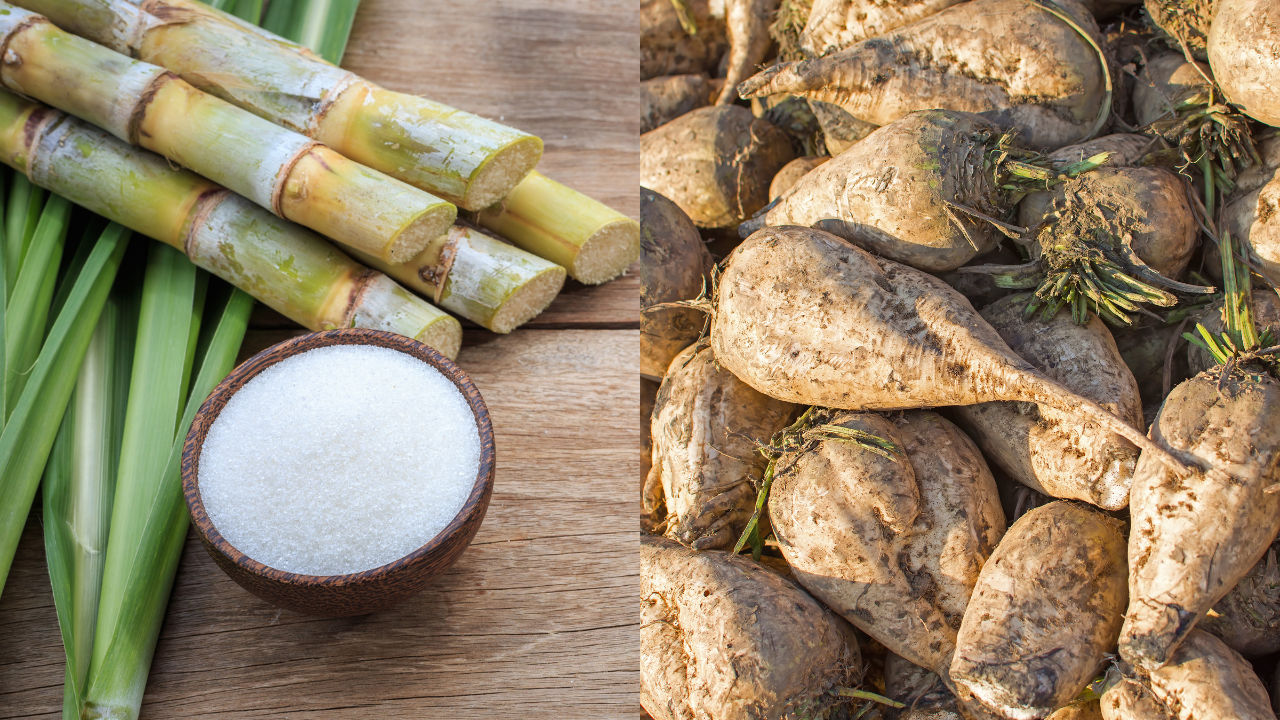Discover the Uses and Perks of Beet Sugar Vs Cane Sugar in Your Daily Diet
Exploring the distinctive top qualities of beet and cane sugar exposes even more than simply their sweetening abilities; it highlights their distinct impacts on wellness and cookeries. Beet sugar, recognized for its refined flavor, is commonly preferred in delicate desserts, whereas cane sugar, with its hint of molasses, includes richness to durable dishes. Each type holds its very own nutritional profile and glycemic implications, welcoming a much deeper understanding of their functions in a balanced diet regimen and lasting intake techniques.
Origin and Manufacturing Procedures of Beet and Cane Sugar

The distinct environments and soil types required for expanding sugar beetroots and sugarcane add to differences in their cultivation methods and geographical circulation, affecting the economics and sustainability of their manufacturing. beet sugar vs cane sugar.
Nutritional Contrast In Between Beet Sugar and Cane Sugar
Regardless of stemming from various plants, beet sugar and cane sugar are nutritionally extremely similar, both primarily containing sucrose. Each gives regarding 4 calories per gram, translating to about 16 calories per tsp. Structurally, both sugars are composed of about 99.95% sucrose, with minimal amounts of various other substances like moisture and trace minerals, which do not dramatically alter their dietary accounts.

Inevitably, when choosing between beet sugar and cane sugar based upon dietary web content alone, both deal similar benefits and drawbacks as they are essentially forms of the same particle-- sucrose, giving quick energy without other nutrients.
Influence On Health: Glycemic Index and Caloric Material
Checking out additionally into the results of beet sugar and cane sugar on health, it is crucial to consider their glycemic index and calorie web content. The glycemic index (GI) of both beet and cane sugar is around 65, categorizing them as high-GI foods, which can cause quick spikes in blood glucose degrees.
Each sort of sugar includes about 4 calories per gram, making their caloric material useful content matching. For those checking caloric intake, especially when handling weight or metabolic health and wellness problems, comprehending this equivalence is essential (beet sugar vs cane sugar). Extreme usage of any high-calorie, high-GI food can add to health and wellness concerns such as obesity, heart illness, and insulin resistance.
Environmental and Economic Factors To Consider of Sugar Manufacturing
Beyond wellness effects, the manufacturing of beet and cane sugar additionally raises considerable ecological and economic worries. Sugar beet growing often tends to require cooler climates and has a lower geographical footprint compared to sugar cane, which flourishes in tropical regions. However, both crops are extensive in terms of water use and land occupation, potentially resulting in deforestation and water deficiency. Economically, the international sugar market is extremely unstable, influenced by modifications in global trade plans and aids. Lots of countries incentivize sugar production with monetary assistance, skewing market Click Here value and affecting small-scale farmers negatively.
Additionally, the usage of pesticides and plant foods in both beet and cane sugar growing can cause dirt degradation and contamination, more influencing biodiversity and regional water bodies (beet sugar vs cane sugar). The choice between cultivating sugar beet or cane often pivots on regional environmental conditions and financial elements, making the sustainability of sugar production a complex issue
Culinary Applications and Taste Differences
While the environmental and financial elements of sugar manufacturing are undoubtedly considerable, the choice in between beet and cane sugar additionally affects cooking applications and flavor accounts. Beet sugar, obtained from the sugar beet plant, is recognized for its remarkably neutral taste.
Walking stick sugar, removed from sugarcane, often preserves molasses traces, which impart a distinct richness and deepness. The mild variant in moisture web content in between beet and cane sugar can affect the appearance and uniformity of meals, making cane sugar a favored selection for specific recipes that profit from its one-of-a-kind homes.

Conclusion
To conclude, both beet and cane sugar have distinct beginnings and production processes, offering comparable dietary accounts with mild distinctions in salt content and taste. While their effect on health and wellness, specifically regarding glycemic index and calories, is equivalent, the selection in between this contact form them often steams down to environmental, financial aspects, and specific cooking needs. Understanding these elements can guide consumers in making informed decisions that straighten with their health objectives and flavor choices.